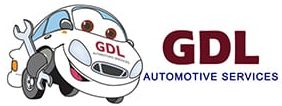Driving Tips Every Safe Motorist Should Remember
While it might be some years since you first got your licence, it never hurts to take another look at the road rules and be reminded with some safe driving tips to make sure you’re keeping up with changes and watching for any bad habits forming.
Pay Attention
For drivers of all levels of experience, whether a learner or a veteran, it’s important to remember to pay attention, stay alert every second you’re at the wheel. Staying alert means you can react in a split second, which could save you, your passengers and other road users from a smash, injury, or even death.
Scan the Road, Front, Sides and Back
So many crashes are caused by drivers only looking at the vehicles ahead of them. You have to continually and quickly scan the road not only in front but all around the car, so you can see if someone is swerving towards you, whether you’re less than a metre from a cyclist for instance, which may prevent accidents.
Allow Buffer Zones
As a driver, you have to understand that it can take 13 metres to bring a regular car to a stop, and that’s doing only 48 km/h – more depending on the vehicle. If your tyres aren’t inflated enough or if it’s wet and you’re driving on slippery roads, stopping can take even longer. So allow plenty of space between your car and the one in front of you and leave even more space at higher speeds.
Drive to the Road Conditions
There are plenty of unexpected threats to your safety when driving, including rain, glare, wind, gravel, oil spills, and night driving especially in areas of high wombat and kangaroo populations. The message is: slow down, drive in your comfort zone, watch and take note of road signs because they aren’t there for decoration, they have a purpose, and that’s to keep you safe.
Be Aware of Your Blind Spots
Before changing lanes, always physically turn and quickly check over your shoulder, because everyone has a blind spot. To help reduce blind spots so you can see as much of the lanes next to you as possible, turn your side mirrors out far enough.
Wear Your Seat Belt
You can be killed in a head-on crash at a mere 29 km/h if you don’t wear a seatbelt or don’t have an airbag fitted to your car. Seat belts limit your contact with the inside of your car and on impact, they spread the forces over more of your body which can protect you from injury to the neck, whiplash.
Traversing Roundabouts
Roundabouts, with either single or multiple lanes, help to manage traffic flow. The roundabout has been used to save lives and prevent injuries for years, yet most Australians still don’t know the rules of entering and exiting – or even when they should use their blinkers. It tops the list of the most misunderstood road rule, and roundabouts are the subject of a lot of confusion for many drivers, so the following information might help to enlighten you.
The rules for single-lane roundabouts are the same as for multiple-lane roundabouts.
- On approach: All vehicles going into a roundabout must give way to any car already on it.
- Giving way: The driver has to slow down and if necessary stop to avoid a collision. Then, give way to any cars already on the roundabout, whether they’re on your left or right.
- Turning left: On approach, choose the left lane, blinker left, and stay in that lane to leave the roundabout.
- Driving straight ahead: Don’t signal on approach, but always signal with your left blinker at 12 o’clock before exiting. You can approach the roundabout from either right or left lanes (unless there are road markings that state otherwise), then stay in the same lane through the roundabout and leave in that lane.
- Turning right: On approach, choose the right lane, signal to the right, stay in that lane and signal left at 12 o’clock before leaving in the right lane.
- U-turns: On approach, blinker right, drive in the right lane, but then blinker left at 12 o’clock before leaving the roundabout in that lane.
- Exiting: If practical, you have to signal left when leaving a roundabout.
- Cyclists: Bicycle riders can turn right from the left-hand lane and when passing each exit must give way to any vehicle leaving the roundabout.
Don’t drive, drunk, drugged or distracted – or tired
Your attention is impaired by having one standard drink, by feeling tired or stressed, taking prescription drugs, dozing off at the wheel or just not concentrating will slow your reflexes. You need your wits’ about you for that split second reaction that could avoid a crash.
Before You Leave, Plan Your Route
Being lost and confused about where you are and where you want to go leaves more room for making driving mistakes, especially in heavy traffic. The answer is to slow down so you can become familiar with the area and can drive more confidently.
Driving at Night
Night driving, especially in bad weather, can be hazardous due to the lack of visibility, so slow down if you can’t see properly in the rain. When you are confronted with the headlights of oncoming cars, just shift your gaze slightly away from them, and tip the rear vision mirror to lessen glare from cars coming up behind you.
Driving on Country Roads
Country roads can be wide or narrow, smooth or rough, tarred or dirt, and definitely full of surprises such as wombats and kangaroos, holes, cattle, sheep, and large trucks. Drive to the yellow advisory signs, don’t speed, avoid road shoulders, but be ready to slow down and veer over slightly for vehicles passing you. Stay alert, even if the road seems calm and quiet.
In Case of a Crash
If you do happen to be one of the many unfortunate drivers involved in a smash, there are steps to take if you aren’t too injured. You should stop immediately whether you are at fault or not, and if you can, photograph the scene for your insurer, and if necessary, your lawyer. Then if possible, move your vehicle off the road out of the traffic. Switch your hazard lights on if the car is too damaged to move.
Make sure you get the other driver’s name, address, phone number, driver’s licence number, number plate, and insurance details. If anyone is injured call 000 for an ambulance and if the other driver didn’t stop, or refuses to divulge details, call the police. Then call your car insurer, and depending on your policy, they will arrange a tow truck and transport for you.
 Author’s bio
Author’s bio
Kym Wallis, the founding director of Higher Ranking has over 15 years of advertising sales, digital strategy, and business development experience. He recently worked for IBM as the IBM Marketing Cloud Specialist for Australia & New Zealand and is currently working as Digital Adviser for PK Simpson.

